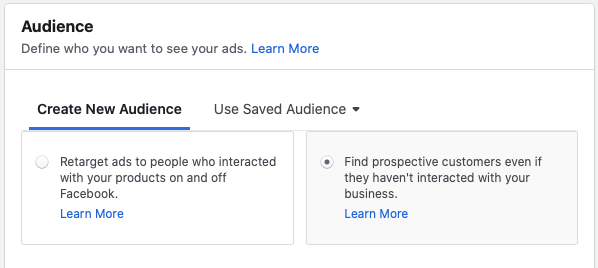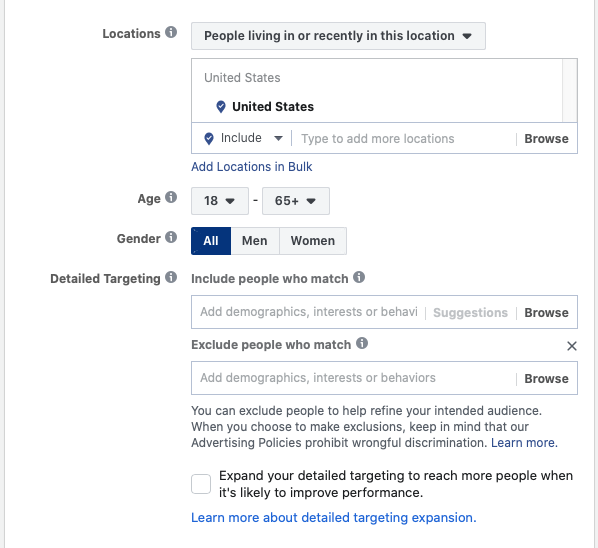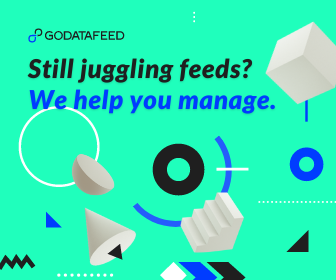It’s no surprise that Facebook and Instagram are perfect for marketing. Why wouldn’t they be? They’re the most popular social networks… ever.
Just having a presence these platforms legitimizes your business; being popular on either is huge. After all, social relevance is critical to the success of many businesses of the digital age.
Your brand needs to thrive where your fans hang out.
But this isn’t just about basic social marketing. It’s about making the most of your product catalog and leveraging what these platforms have to offer.
Let’s talk about using Facebook Commerce for product marketing.
Why your ecommerce business needs to be on Facebook and Instagram
2.5 billion people visit Facebook every month; 1.66 billion are active daily.
And 1 billion people visit Instagram every month.
By and large, they’re the most used social networks – they’re also part of the same Facebook family.
Yes, more than a quarter of the world uses Facebook in any given month. Facebook reaches over 60% of Internet users worldwide; that includes 71% of US adults and 51% of US teens. Of that whole userbase, 74% log in at least once per day.
“With the exception of YouTube – the video-sharing platform used by 73% of adults – no other major social media platform comes close to Facebook in terms of usage.” - John Gramlich, Pew Research Center
As for Instagram:
What’s most important about all these users is that they use these platforms to relax, connect, and discover. That makes Facebook and Instagram ideal for building organic brand awareness, and if possible, a community.
But brand awareness and community building aside, these platforms are great for marketing in general. They’re particularly fantastic for ecommerce marketing.
Facebook for Business is ecommerce-friendly and in general, users are receptive to product marketing across Facebook’s ad network. A whopping 83% of Instagram users discover new products and/or services on Instagram; over half of users follow brands. And 15% of US social media users actively shop on Facebook.
“Simply by being on Instagram, brands can make a positive impression on potential shoppers. People surveyed say they perceive brands on Instagram as popular (78%), creative (77%), entertaining (76%) and relevant (74%).” - Facebook
For millions of Americans, these are prime leisure spots. For businesses, they’re perfect marketing environments.
Social (free) marketing
Creating and running a Facebook Page, Group, or Instagram account is as free as it gets.
Simply building out a clean business profile on either platform secures you some priceless credibility; having both is ideal. Anything you do beyond that – even basic activity – can only benefit you.
Obviously social media marketing can be a little complicated, but it doesn’t have to be.
Take it slow and be genuine. If you can, focus on building a community. A sense of community promotes audience engagement, organic marketing, and user-generated content, not to mention, a sense of purpose.
Then there’s content creation. Put yourself in the position of your audience.
What would you want to see from your brand? Why should people listen to you? What insight, advice, or tips would appeal to them? The answers to these simple questions can inspire some of your strongest content.
In many cases, good free content can be more effective than paid ads.
Facebook Ads, Instagram Ads
That said, then there are ads.
Facebook and Instagram may be distinctly unique platforms, but business settings for both are managed through the same interface, Facebook Business Manager. That’s where you’ll find Ads Manager, your control center for ads across Facebook and Instagram.
These ads come in a wide variety of formats and are surfaced on a bunch of placements across Facebook properties.
They go further than just Facebook and Instagram.
Facebook ads are surfaced on Facebook, Messenger, Instagram, as well as the Facebook Audience Network (a dense network of 3rd party apps that surface Facebook ads; similar to the Google Display Network).
Facebook's massive userbase, audience insights, targeting capabilities, and marketing tools make this a deep subject – check out Hootsuite’s guides for Facebook and Instagram. The sky's the limit here.
I'll be focusing on what most directly benefits ecommerce businesses, dynamic product ads.
Dynamic product ads
Dynamic ads are automated ads that show relevant products to people who’ve expressed interest on your site or elsewhere on the internet.
All you need is a product catalog and you can have Facebook start closing some sales. The better your product data, the better your ads.

Dynamic ads are an essential layer of advanced advertising that you don’t want to overlook. With a good product catalog and minimal setup, you can have your own dynamic ads reach across the extended Facebook ad network. Take a look at our guide on getting started.
“It [dynamic ad campaign] will continue working for you for as long as you want – finding the right people for each product, and always using up-to-date pricing and availability.” - Facebook
They’re only getting better too, not too long ago Facebook started testing Checkout for dynamic ads – more on Checkout later.
So how does Facebook know who to target with your dynamic ads? Well, it all depends on your audience parameters.
Retargeting
If you weren’t already in the loop - retargeting is a form of online advertising that targets site visitors that didn’t convert on a sale or objective. Regarding dynamic ads, retargeting is one of two audience types that you can assign to the ads of a catalog sales campaign.

People quit out of interactions at all stages of the buyer’s journey, often for silly reasons (user experience, distraction, timing, etc.). Sometimes all a customer needs is a subtle reminder.
Retargeting campaigns are effective, affordable, and very much set-and-forget – especially if you have an optimal product catalog.
Where better to run retargeting ads, than on the world’s most popular online hangout spot?
Broad targeting
That’s not all the good that can come from having your products on Facebook, though.
The next best thing you can do with your products on Facebook is to utilize broad audience targeting.
This is the other audience type that you can assign to the ads of a catalog sales campaign. You can do this within the same campaign, but you might want to build out a separate one to test various forms of broad targeting.

With broad audience targeting, Facebook pushes your ads to people “who’ve expressed interest in your products (or products similar to yours), even if they haven’t visited your website or app yet.”
The key bit being, “or products similar to yours.”
A recent Kleiner Perkins study found that 78% of US adults 18-34 have discovered products on Facebook; 59% on Instagram. Think of all the people that would buy from you if they simply knew of your business.
This is one way to target the full range of Facebook’s whole audience. You won’t be reaching everyone – Facebook’s will just consider everyone’s behavior when choosing who to show your ad to.
“Targeting broadly essentially means that you’re mostly relying on our delivery system to find the best people to show your ad to. This approach can lead us to finding potential customers you never would’ve known about otherwise.” - Facebook
Broad audience targeting hones in on your customers before they’re even aware of you.
Detailed broad targeting
Now, it’s worth noting that broad targeting can be refined in a number of ways. Hence, why you might want to build out a separate one to test various forms of broad targeting.
With detailed broad targeting, you can tweak location, age, and gender settings, as well as include and/or exclude people who match a demographic, interest, or behavior.
All sorts of these modifications can be made in the same ad set Audience pane where you select between retargeting and broad targeting.

If your goal is to find hidden customers with broad targeting, avoid getting too detailed with your refinements and stay away from Lookalike Audiences.
Broad targeting is particularly effective with loose parameters, but it doesn’t hurt to test minor refinements. For example, limiting your audience to everyone who matches with a simple interest.
Just remember, the purpose of broad targeting is to reach new customers. You want to give Facebook ample room to learn what works best.
Facebook Commerce
Having your products on Facebook for retargeting and broad targeting ads is a no-brainer, but why stop there if your products are already in Catalog Manager?
Facebook and Instagram can also serve as extensions of your online store. You can show and sell products to people right on either platform.
Facebook Page Shops
A Page Shop is a dedicated commerce hub on your page.
“Any business can have a shop, but this feature best serves retail and ecommerce advertisers. Businesses selling apparel, accessories including bags and luggage, home furnishings and baby or kids products get a lot of value from a Shop.” - Facebook

Shops can redirect people to relevant landing pages, or they can be equipped with Checkout.
To have a shop you must:
- Sell physical items
- Have a product catalog
- Agree to Facebook Merchant Terms
- Have a valid US bank account
- Have a Tax Identification Number (TIN)
Pricing is straightforward and Facebook Commerce setup is easy, as is adding a Shop to a Page.
For all else, reference Facebook Commerce Best Practices to get the ball rolling.
Instagram Shopping
Instagram Shopping is an ecommerce program that:
- Gives your Instagram a pocket storefront
- Enables you to tag products in organic posts and Stories
- Allows your products to be found in Search & Explore
Currently, Checkout is experimental on Instagram – it’s only available to select retailers.
Regardless, any business can promote their products and have users redirected to relevant landing pages.
Eventually Instagram Checkout should be a more accessible feature.

To get started, you must:
- Sell physical items
- Have a product catalog
- Comply with Facebook Commerce Policies
- Have a business account
- Have your account connected to a Facebook Page
If that all lines up, check out Facebook’s guide on Setting Up Instagram Shopping.
When everything is lined up, you’ll be able to showcase your Facebook Shop products on your Instagram storefront. You’ll also be able to tag products on any given post (5 per post; 20 products per multi-image post).
Facebook is also testing a new Instagram ad feature that allows advertisers to turn shopping posts into ads.
You know what to do
Being present on these networks is vital to your credibility, and being popular on either is huge – but basic social marketing is only the beginning of what these platforms enable.
Facebook and Instagram are effective marketing mediums with ecommerce tools that would benefit many businesses.
In particular, ecommerce businesses have a lot to gain here – but you'll need a good grasp on your product data. An effective product catalog enables you to automate strong dynamic product ads, as well as run a Facebook Shop and utilize Instagram Shopping.
Not to mention, an optimized product catalog is your ticket to success on many other platforms. Trust us, we know a thing or two about product data. Drop us a line if you’re looking to get your products on Facebook, Instagram, or anywhere else.
You have little to lose and everything to gain from leveraging Facebook for product marketing.






